Abstract
1. In forty-one out of forty-seven dogs under chloralose—urethane or Nembutal anaesthesia, mechanical stimulation of the nasal mucous membrane caused a reduction or inhibition of respiration, bradycardia, variable changes of arterial blood pressure, and a small rise in venous pressure.
2. Simultaneous measurements of arterial and venous pressures, and also of blood flow in various arteries by means of an electromagnetic flowmeter indicate that the calculated vascular resistance increases in the intact limb, muscle, and skin, and the vascular beds of the vertebral, superior mesenteric, renal and splenic arteries. No changes in vascular resistance occur in the common carotid circulation.
3. Evidence is presented that the increase in vascular resistance is due to vasoconstriction, and occurs in the absence of changes in pulmonary ventilation.
4. Stimulation of the nasal mucous membrane causes a reduction in volume of the spleen.
5. The respiratory and cardiovascular responses are reflex in nature, being abolished by the application of a local anaesthetic to the nose or by combined division of the maxillary and ethmoidal branches of the trigeminal nerves. The cardiac response is mediated largely by the vagus nerves, and the vascular responses by sympathetic adrenergic fibres.
6. Cessation of the stimulus to the nose not infrequently results in the following temporary after-effects: hyperventilation, tachycardia, hypertension, and vasodilatation in the intact limb and in muscle.
Full text
PDF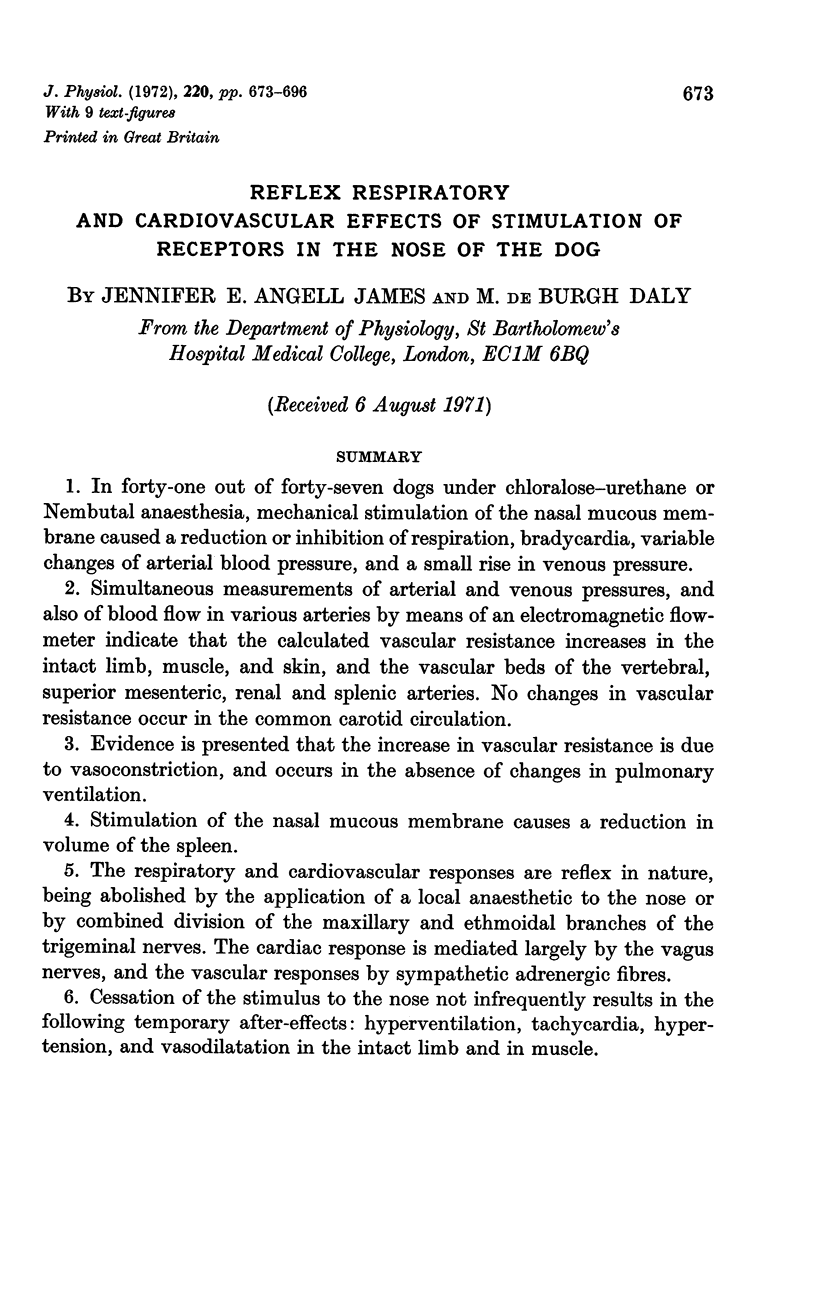
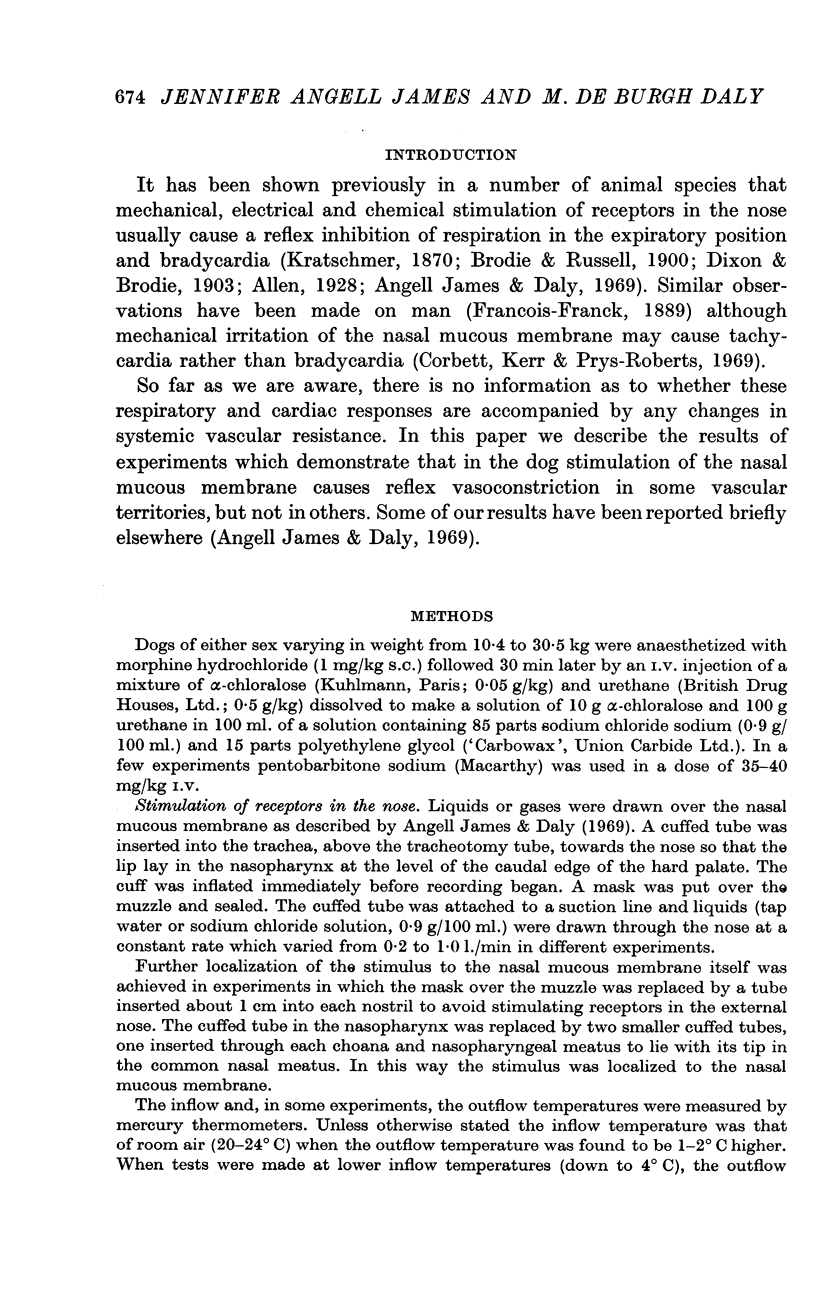
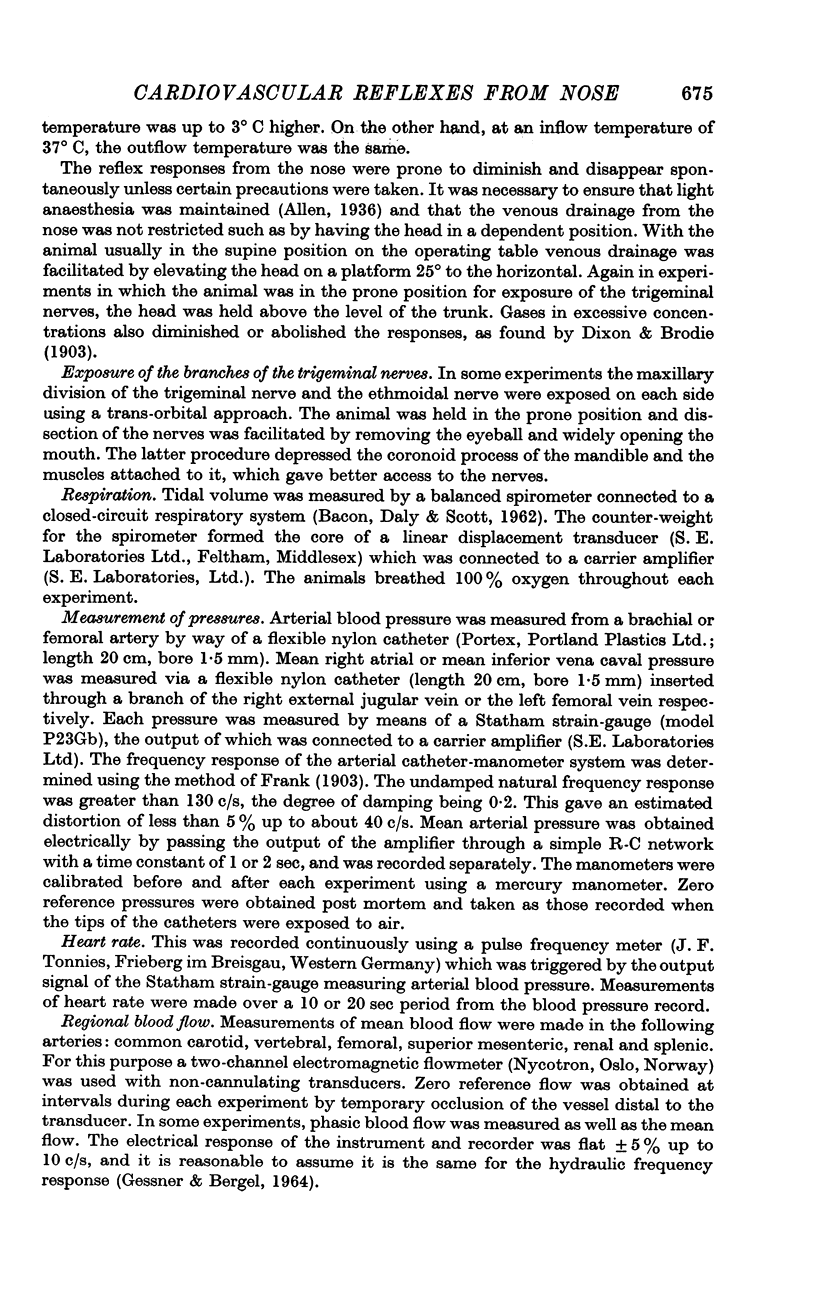
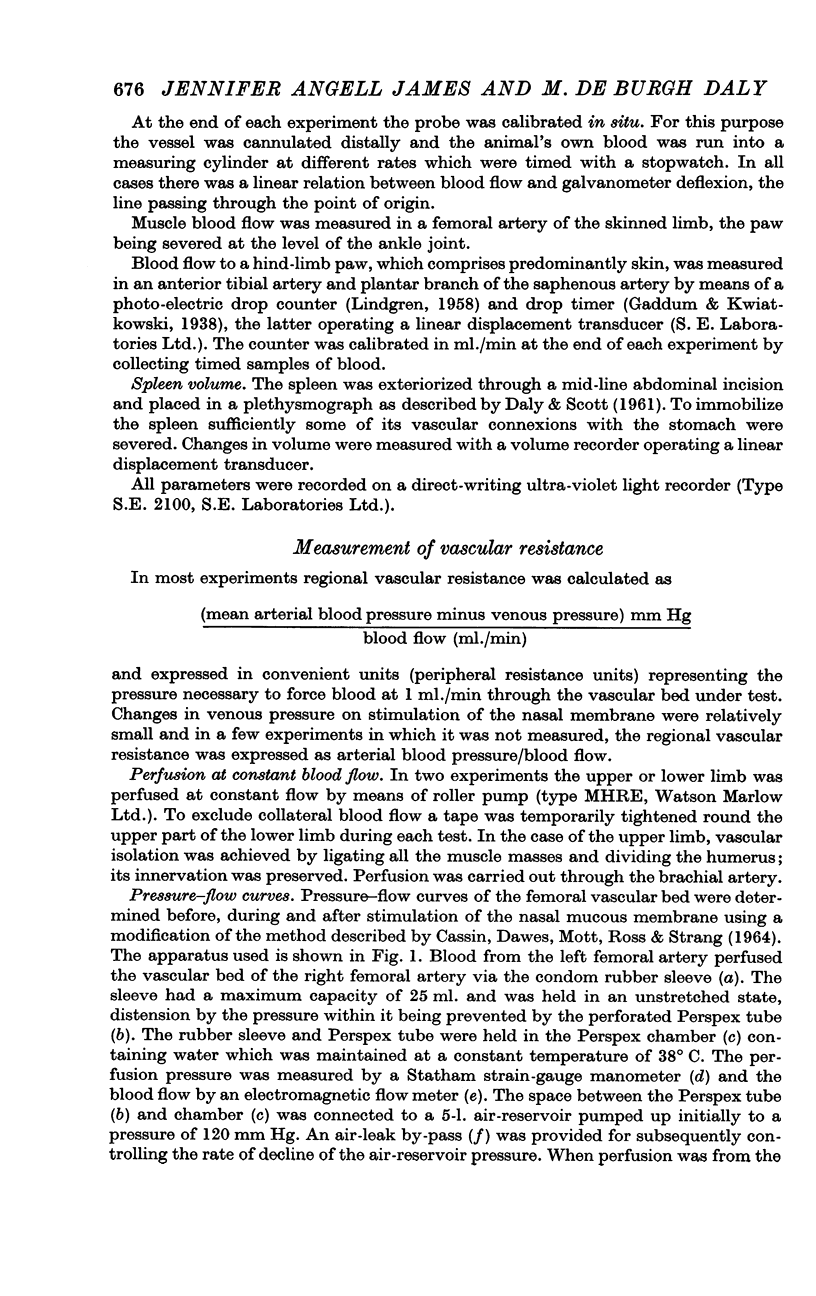
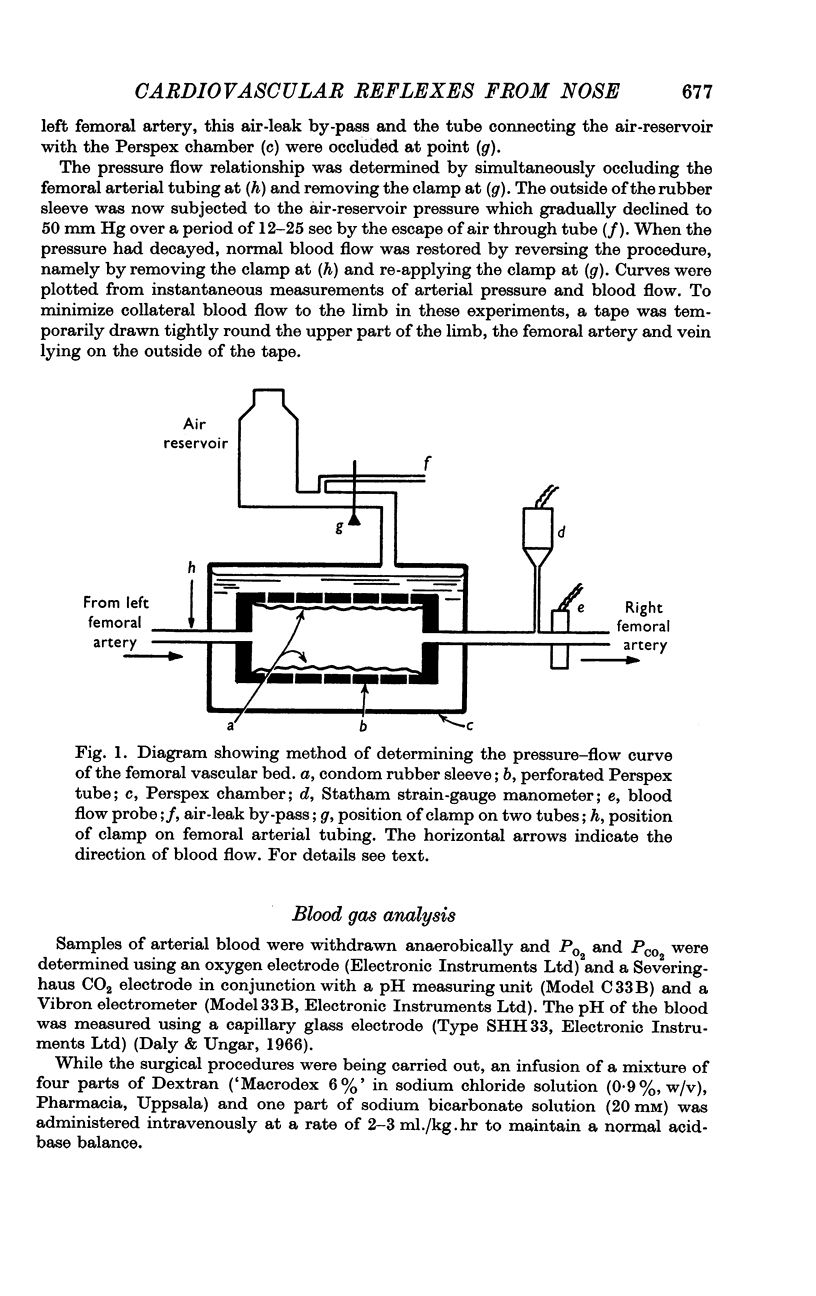
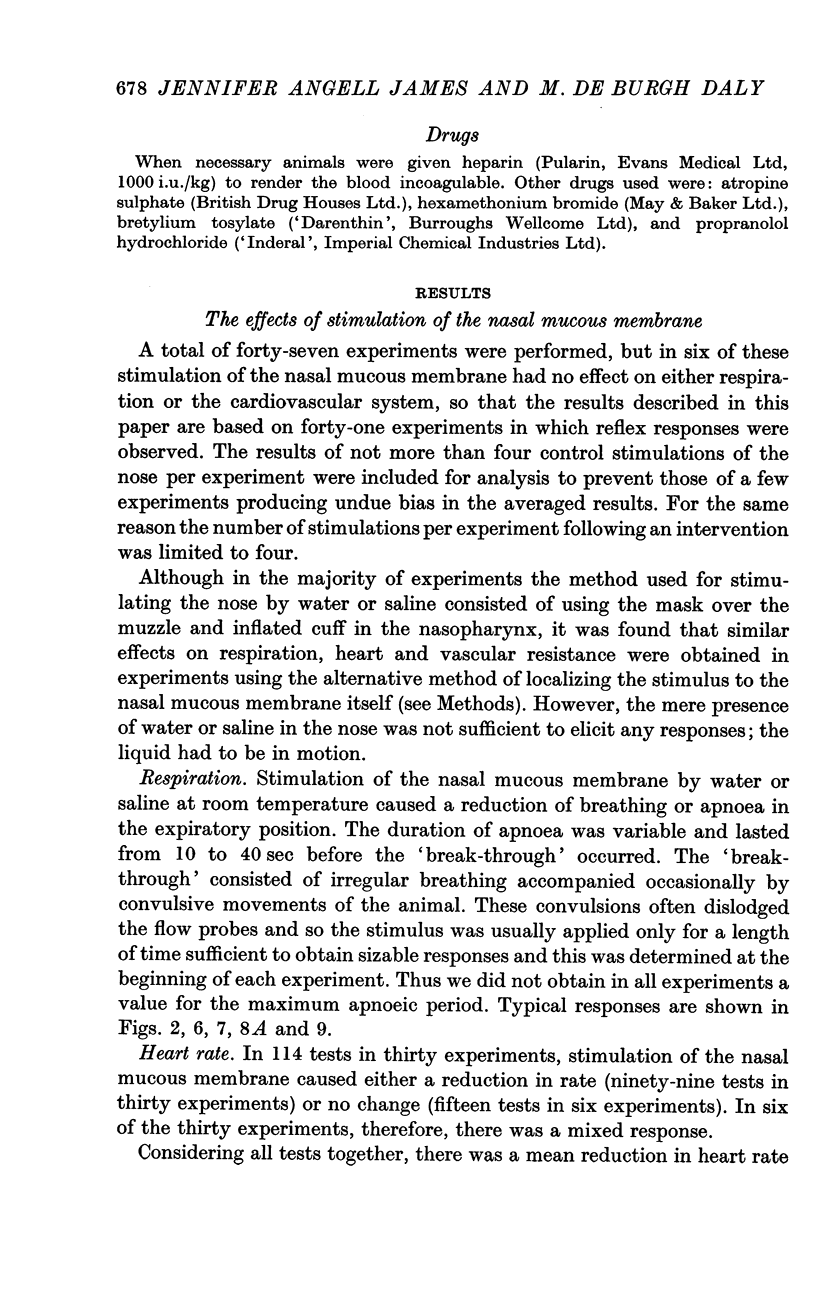
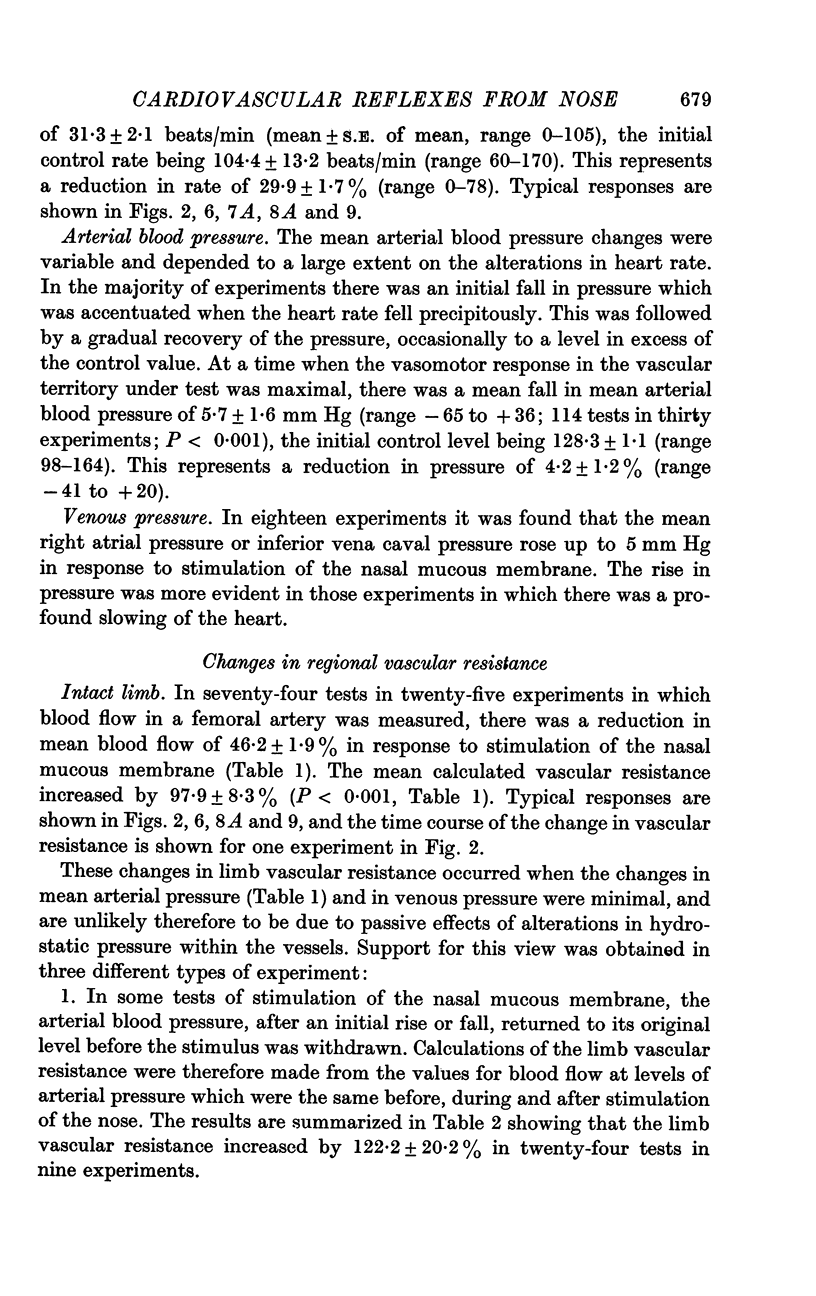
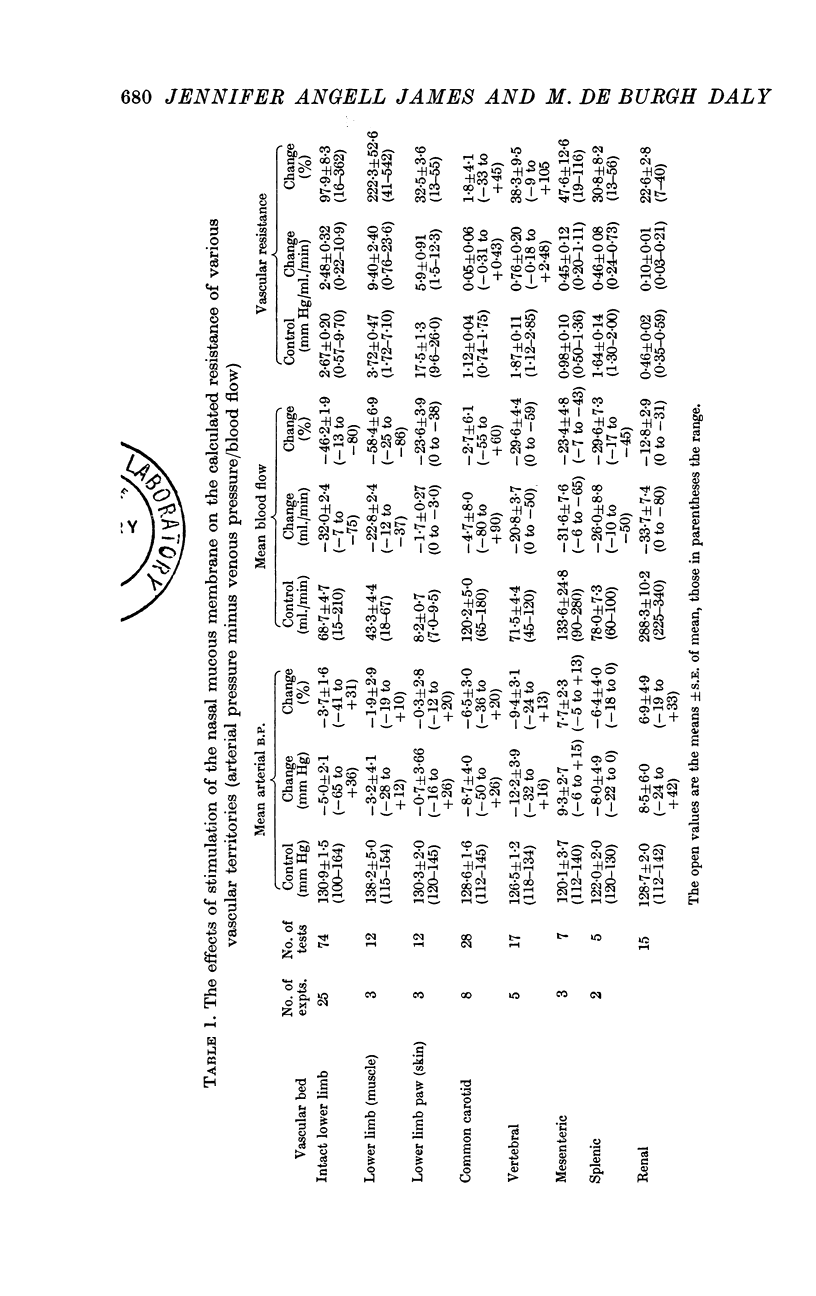

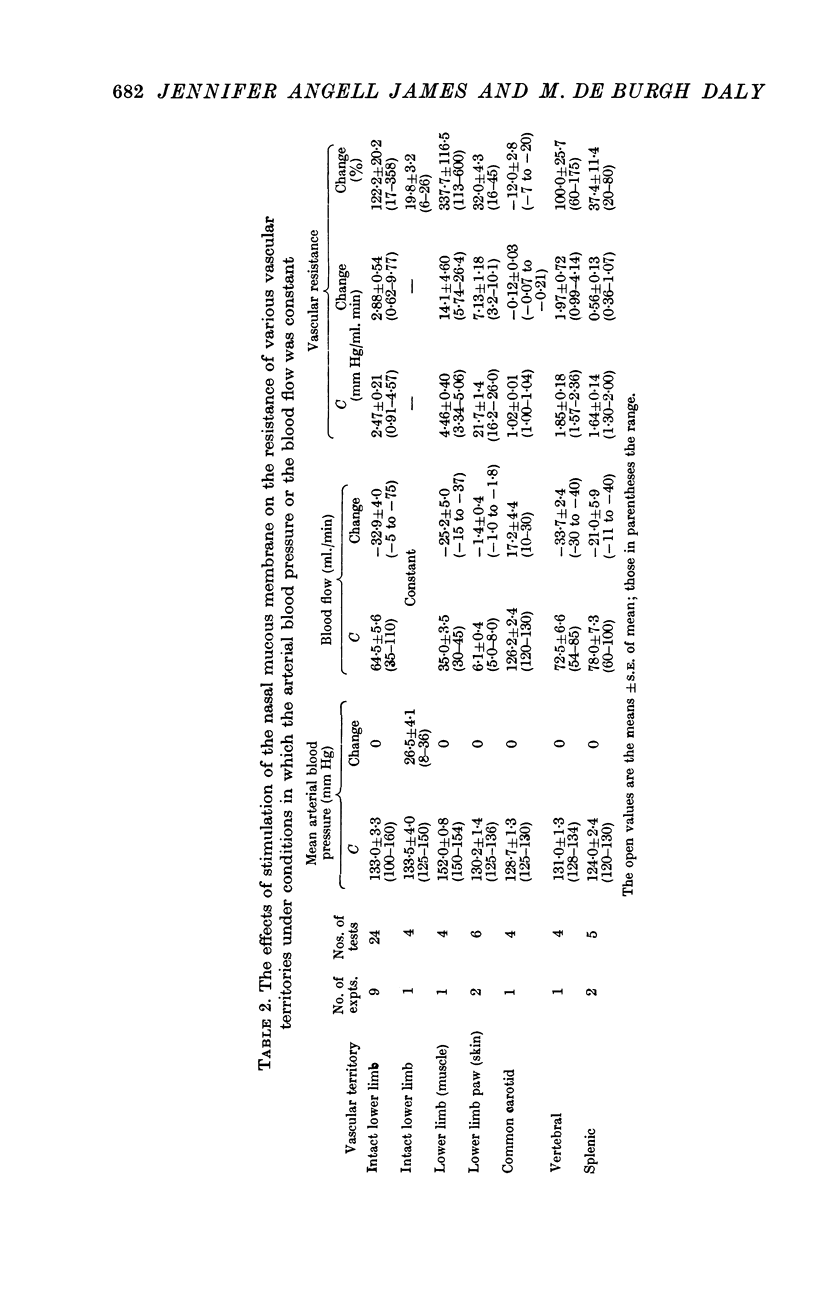
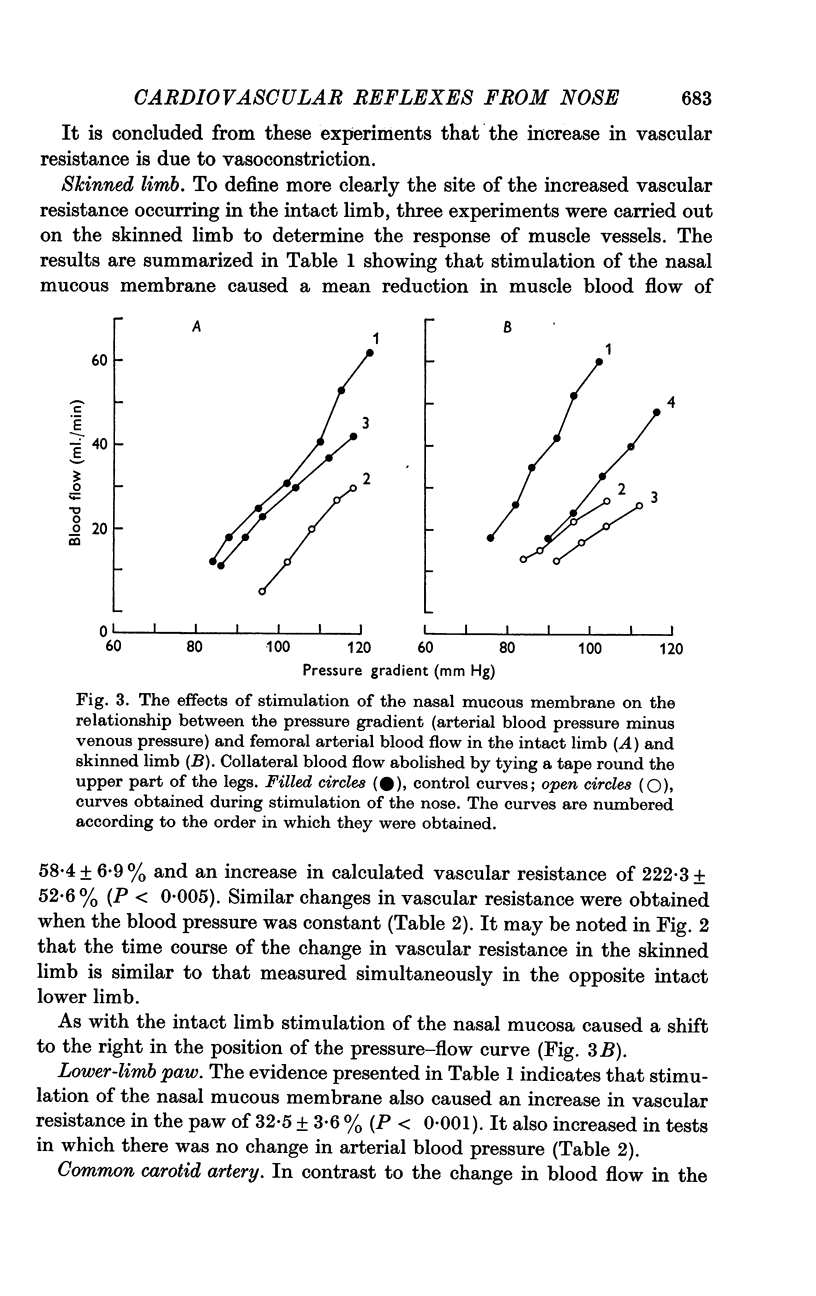
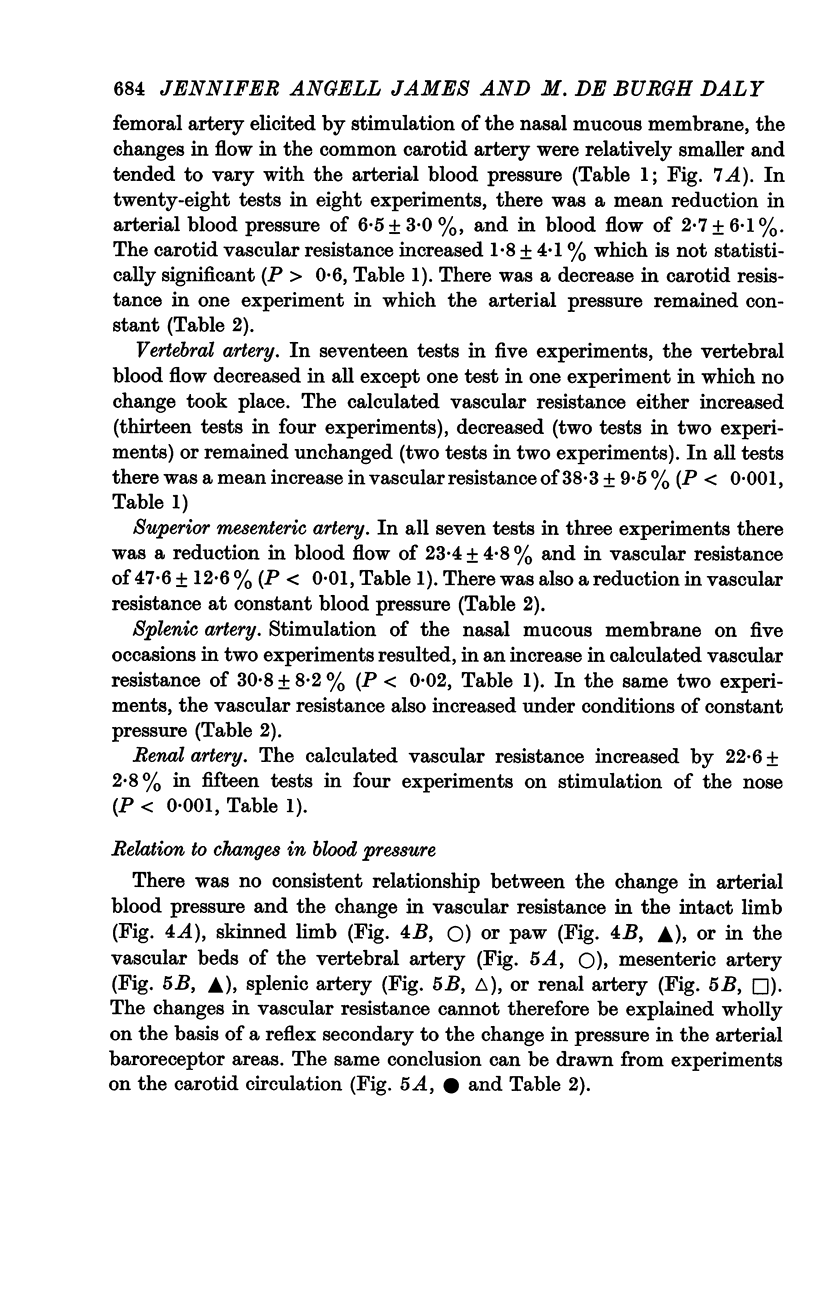
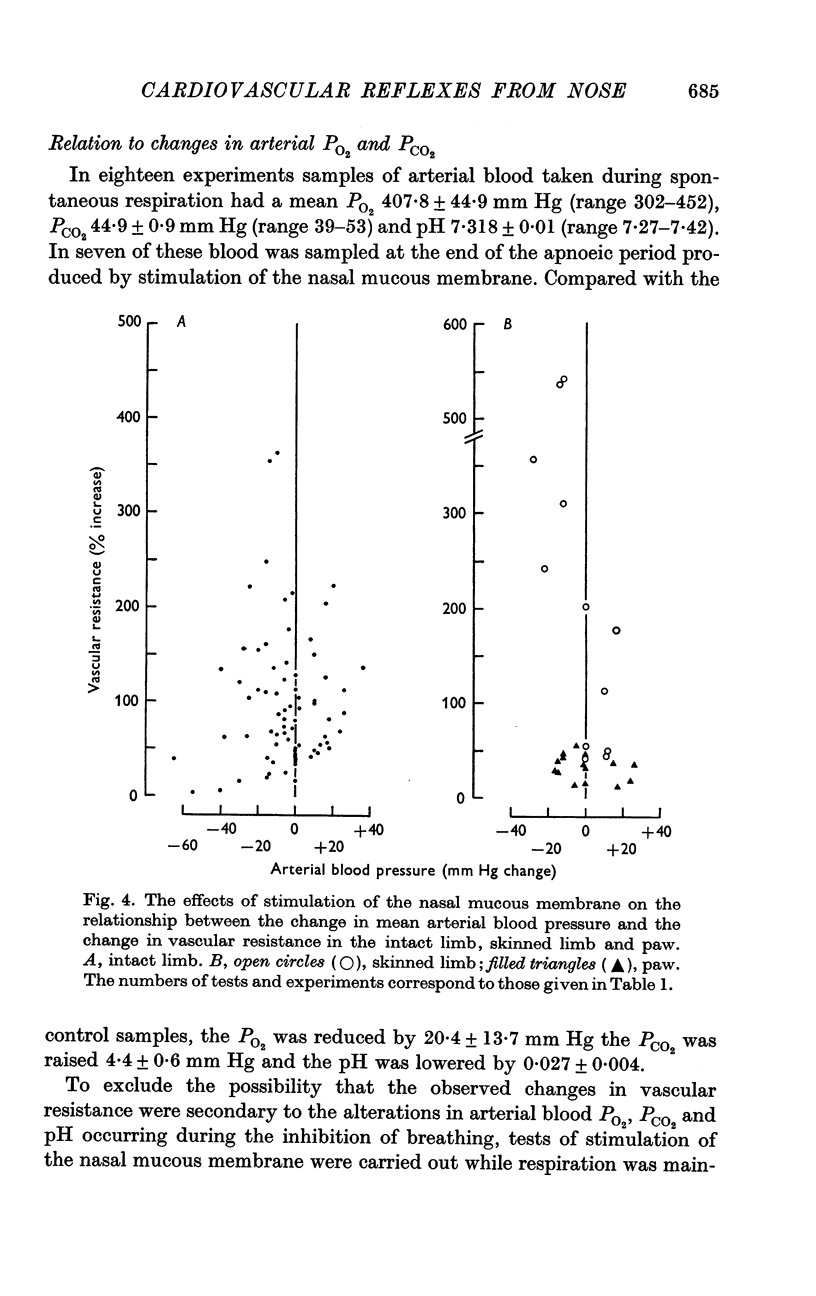
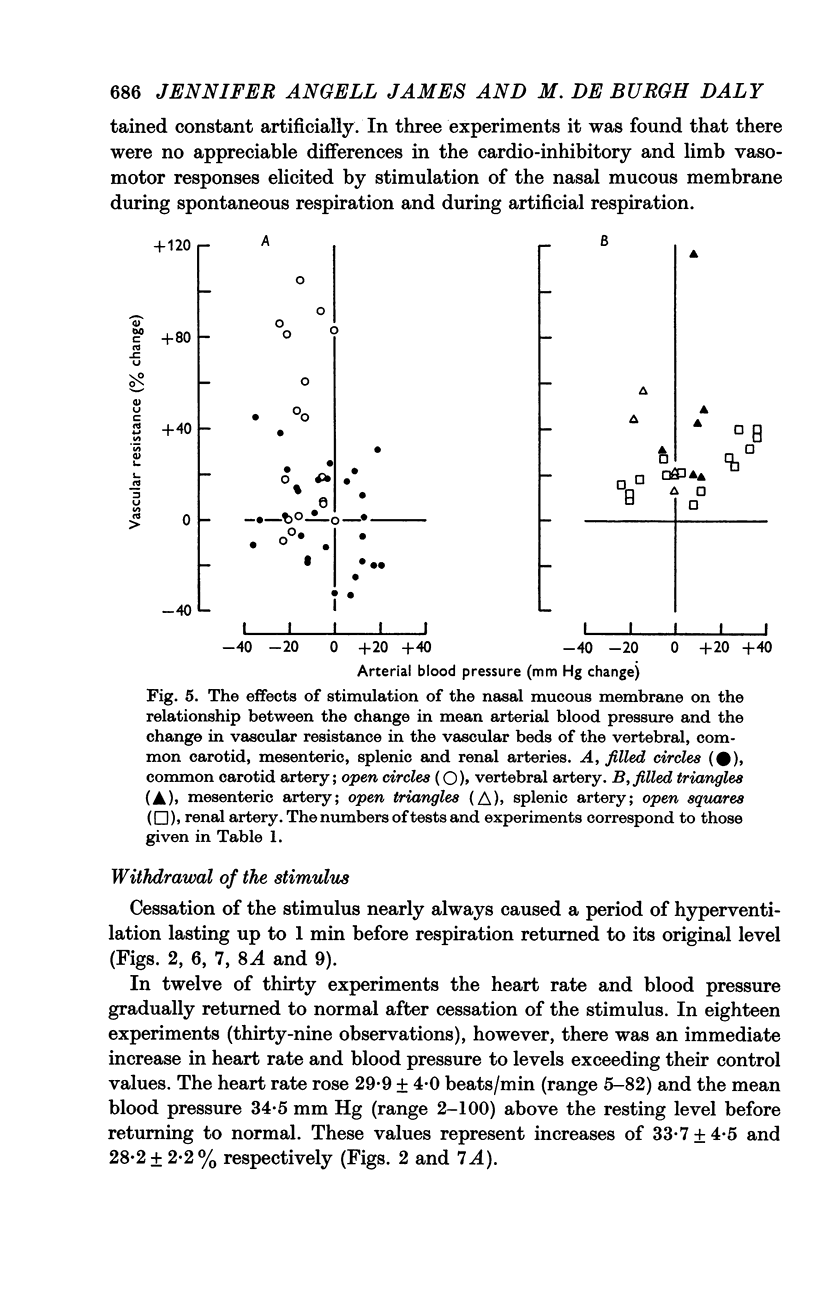
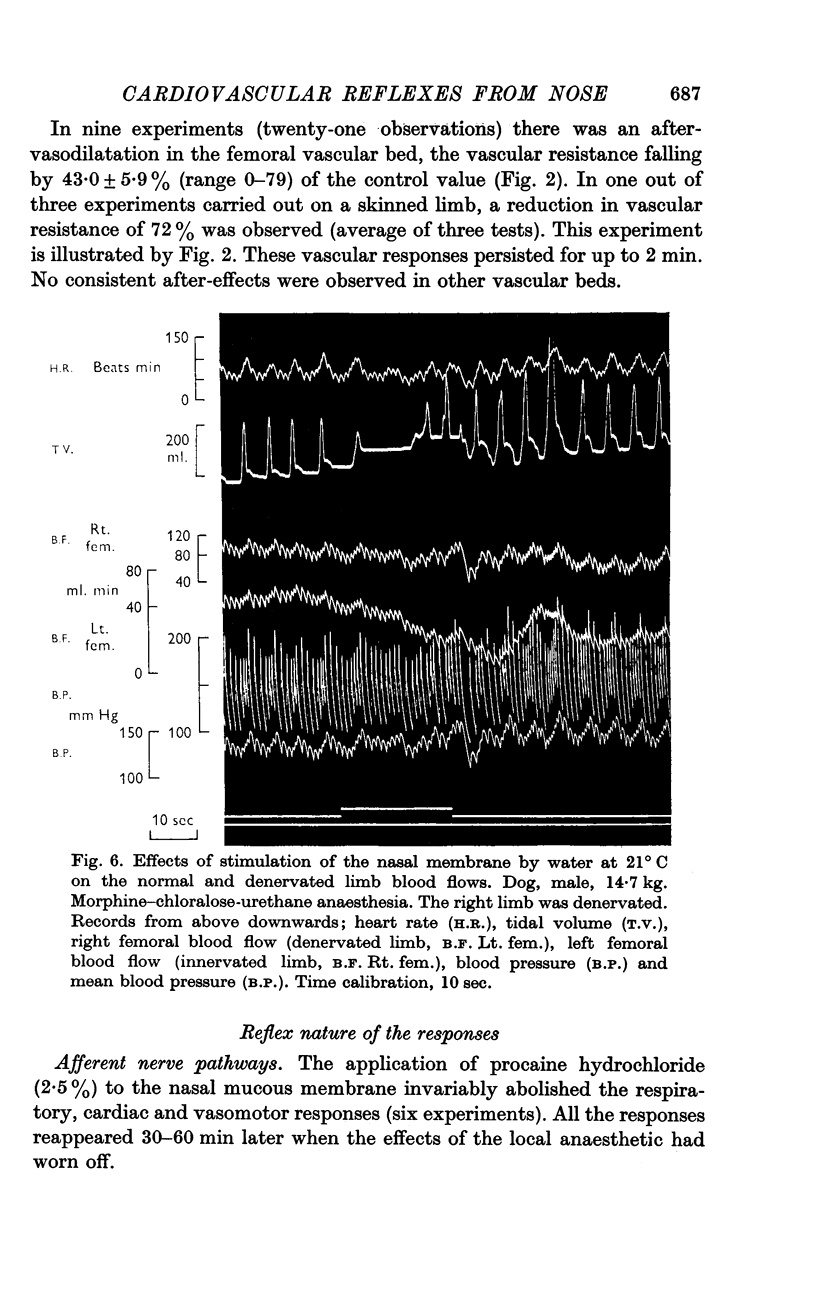
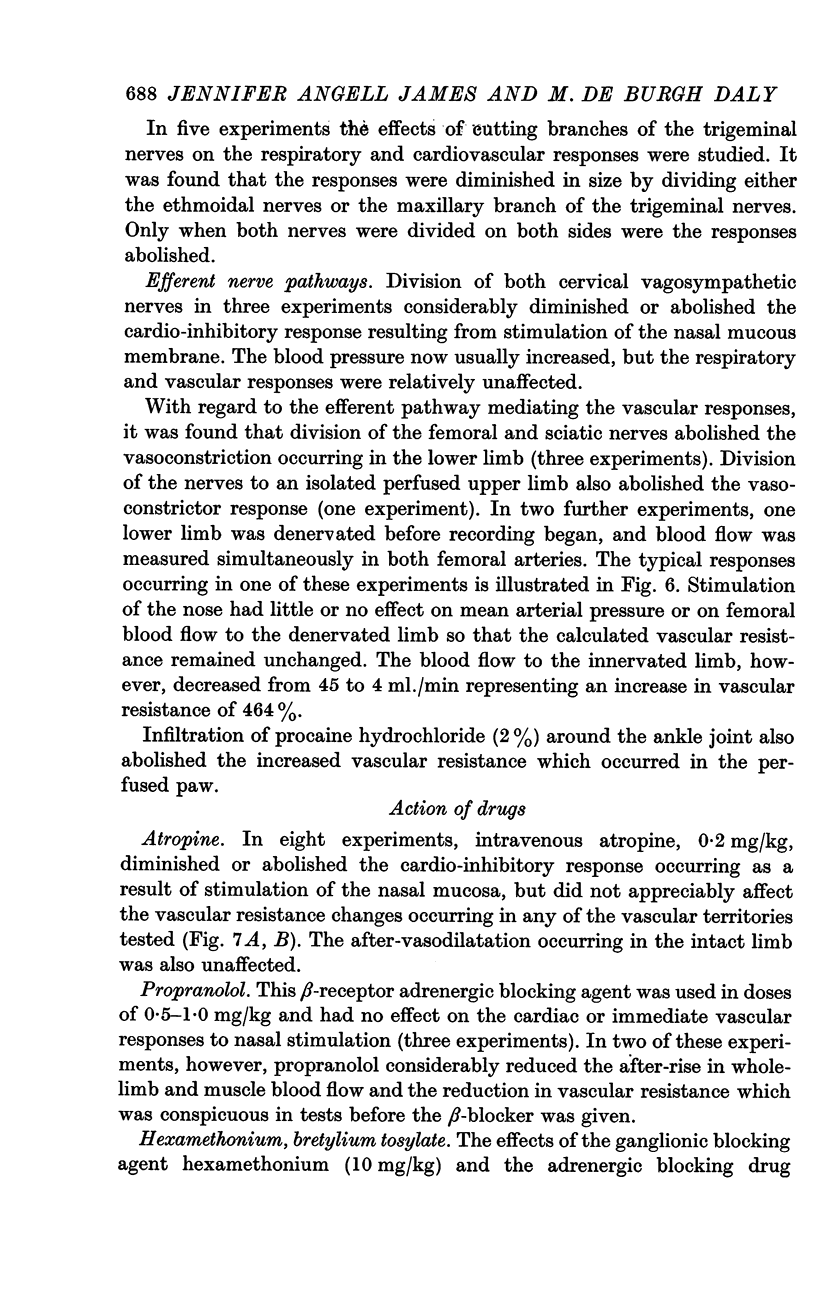
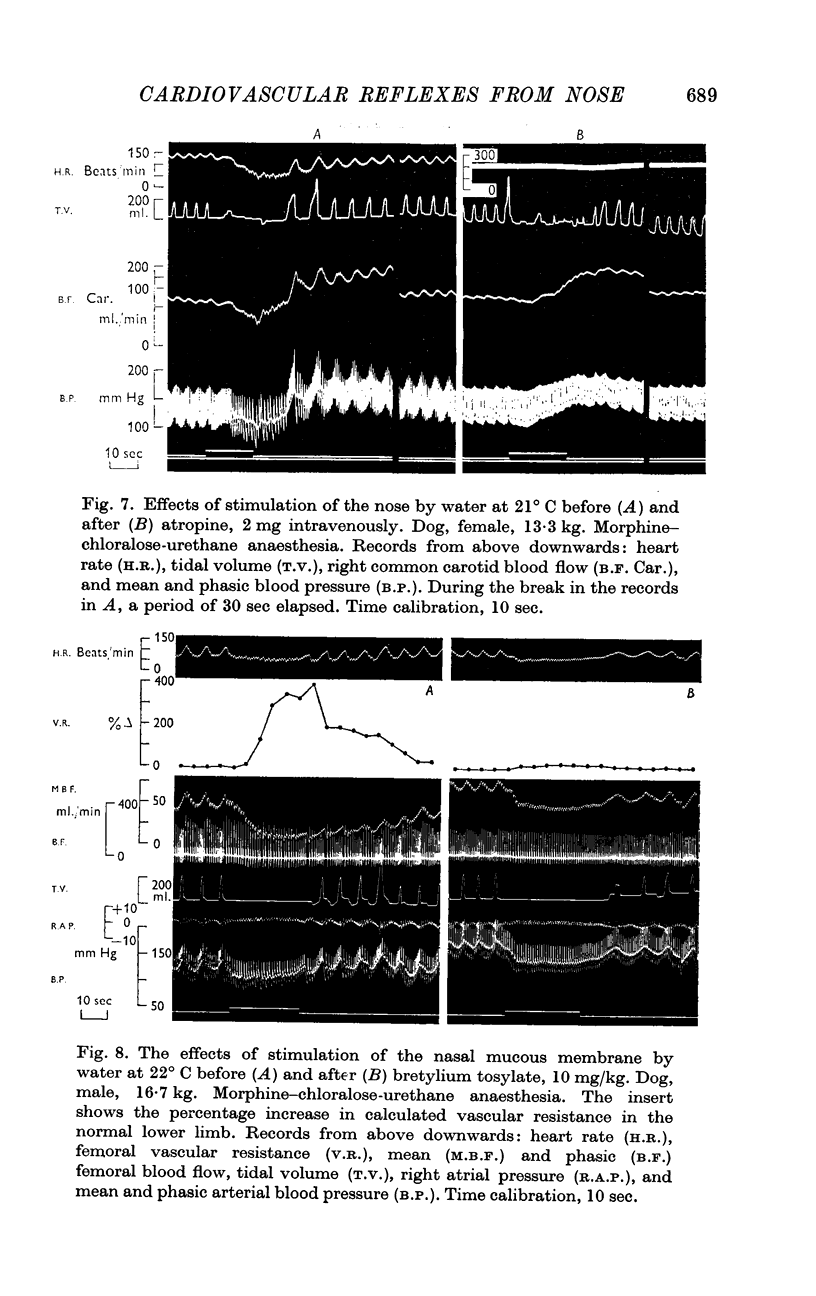
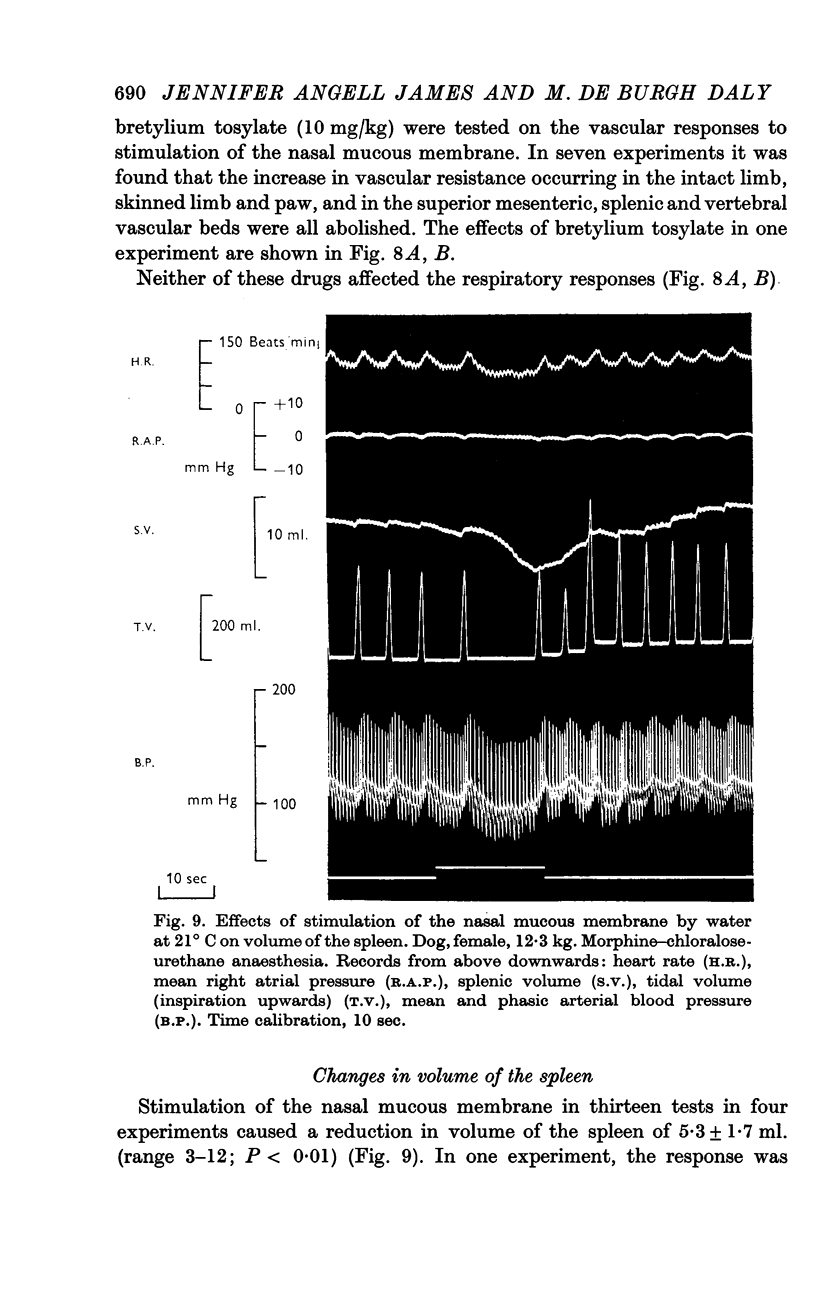
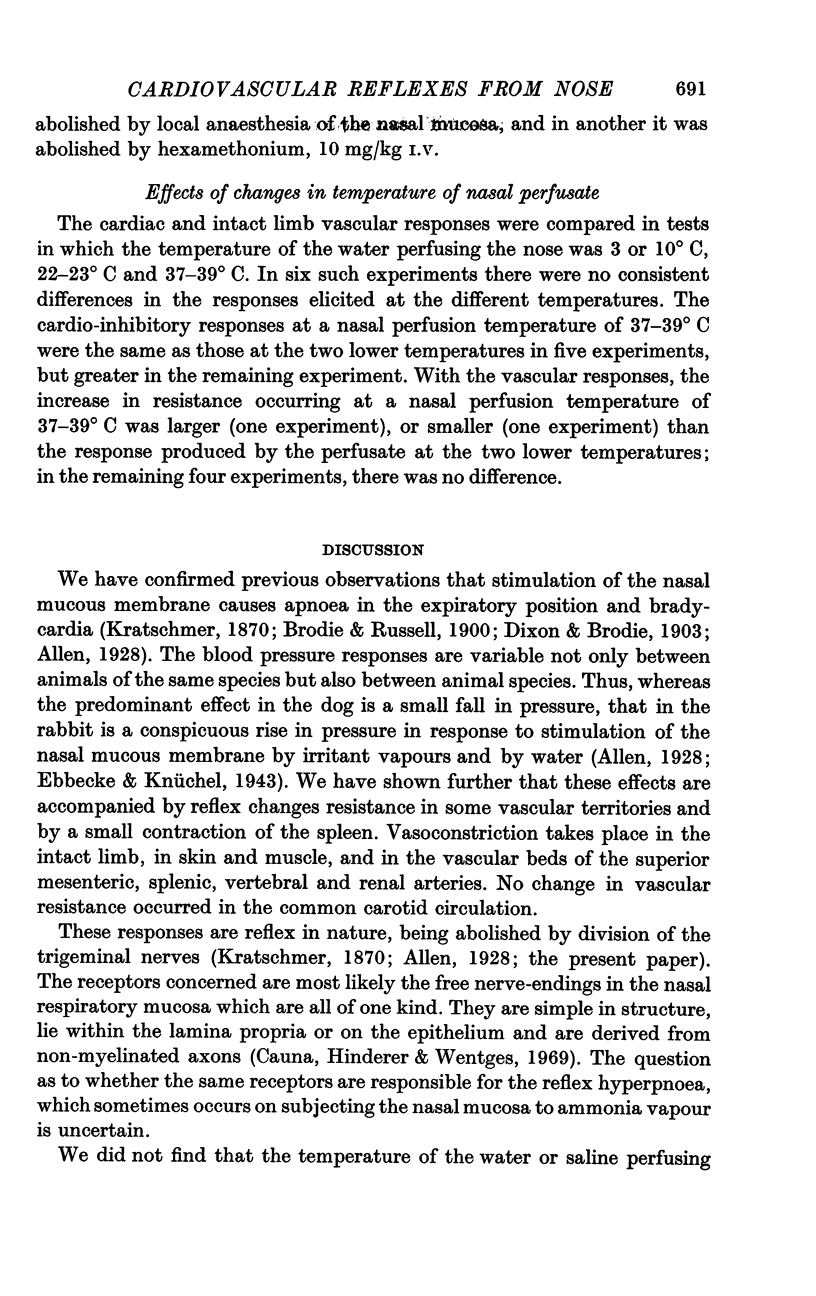
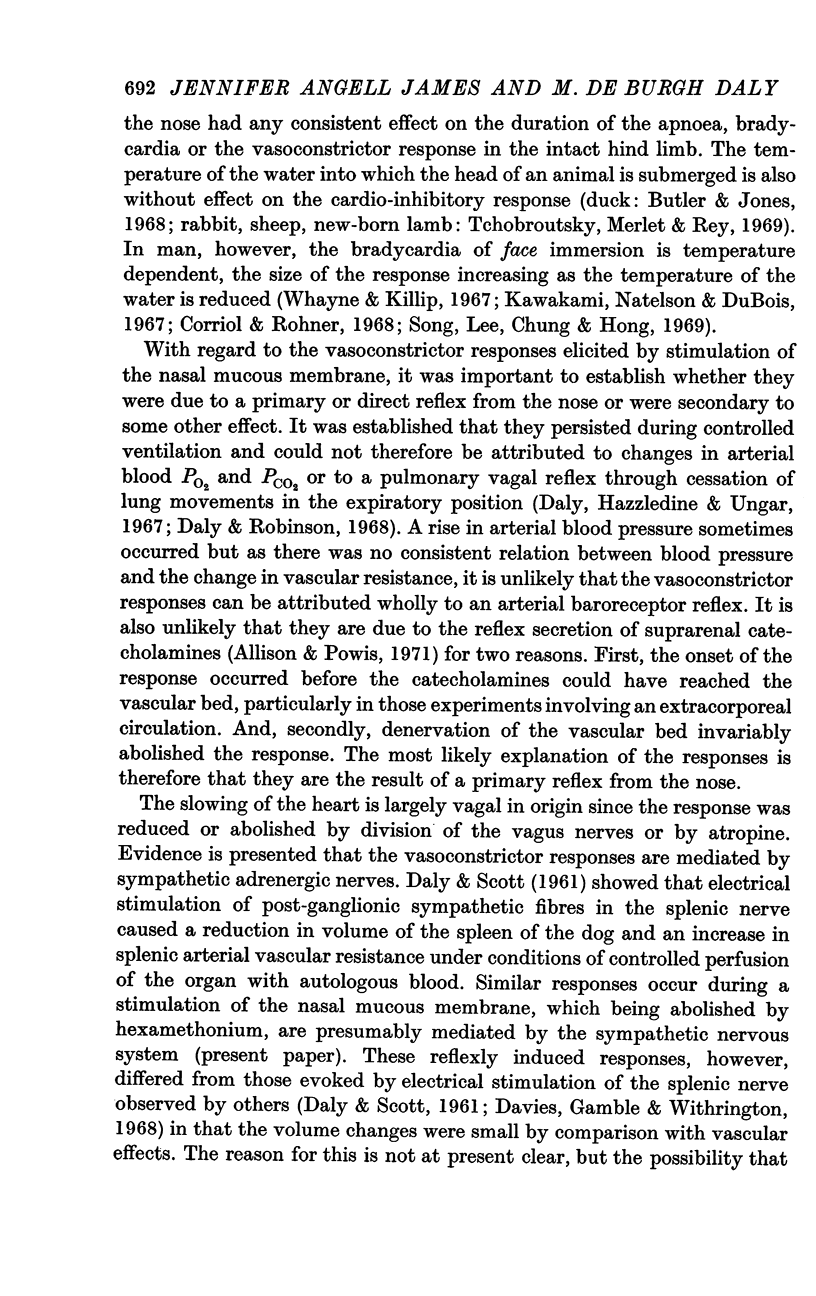
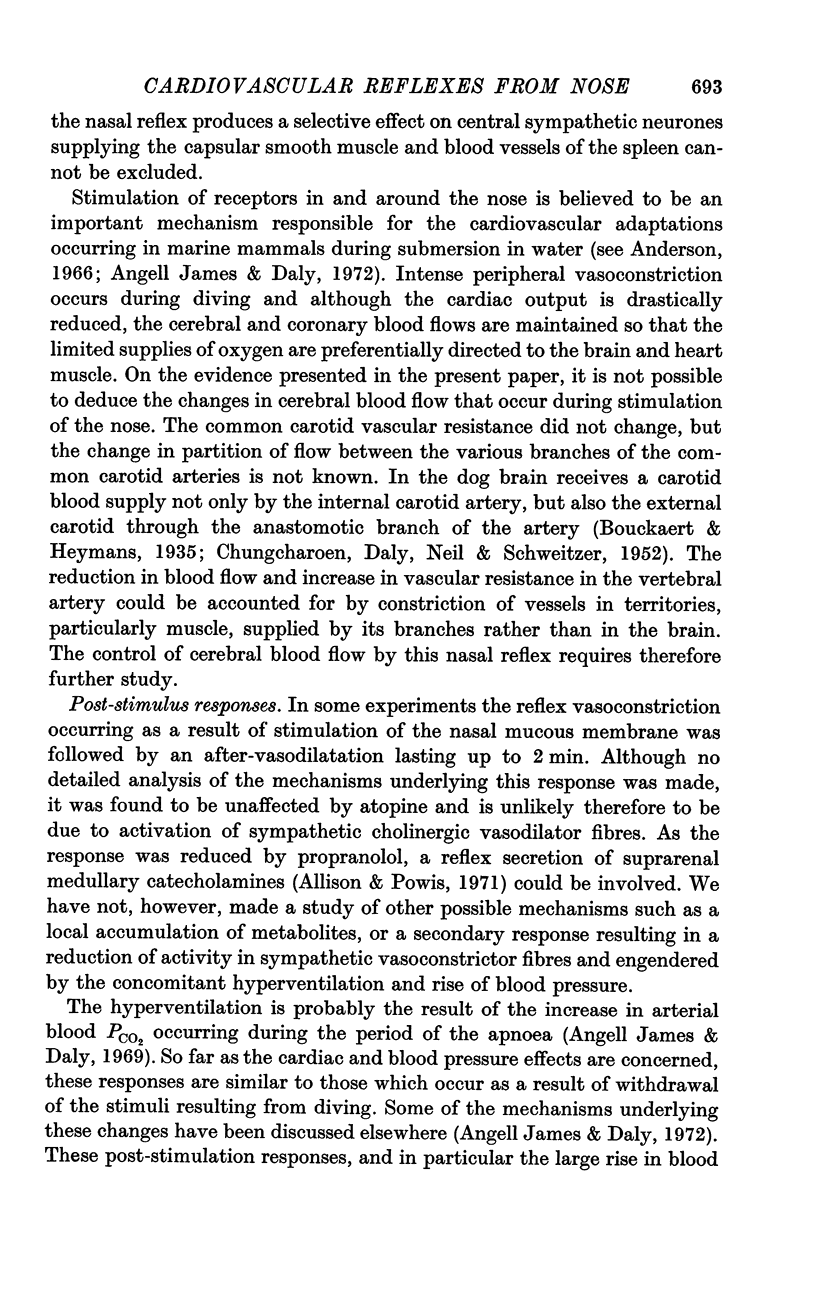
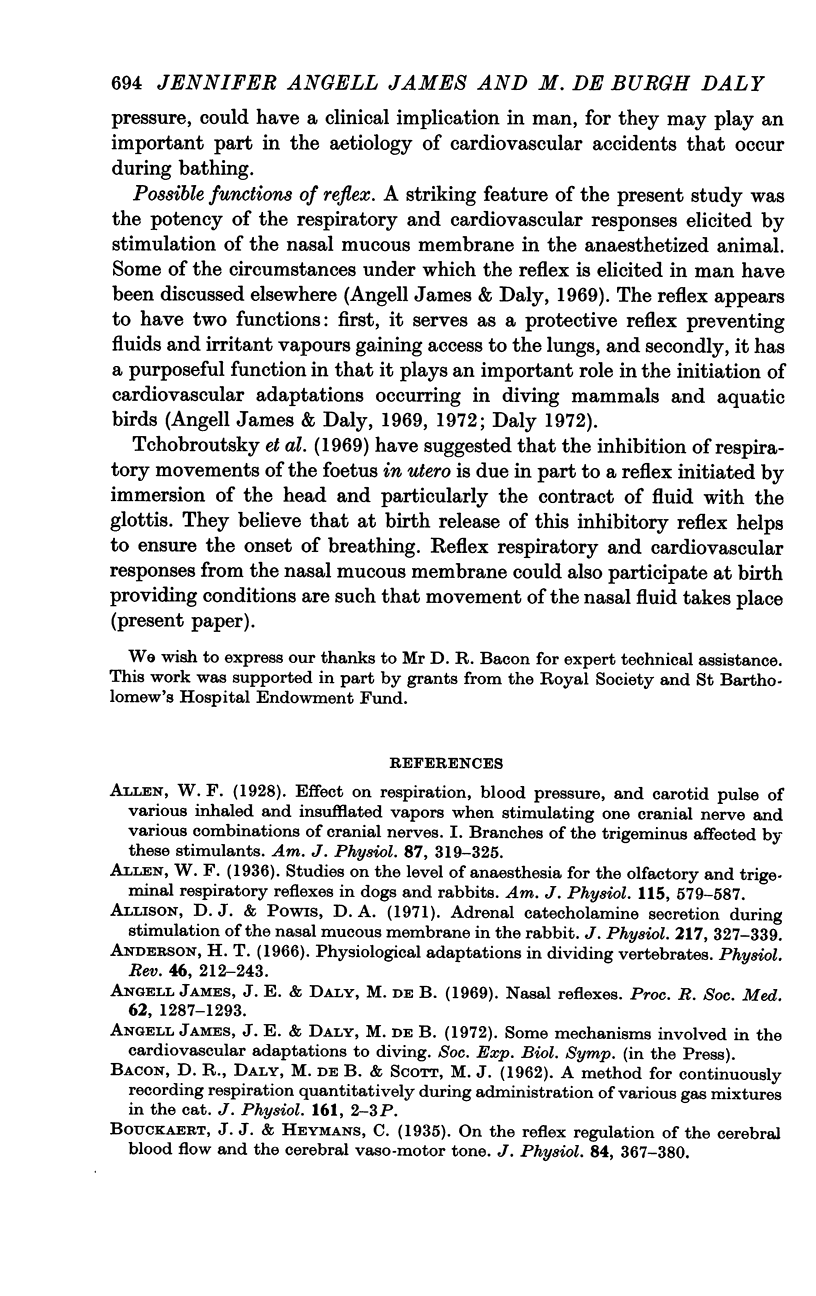

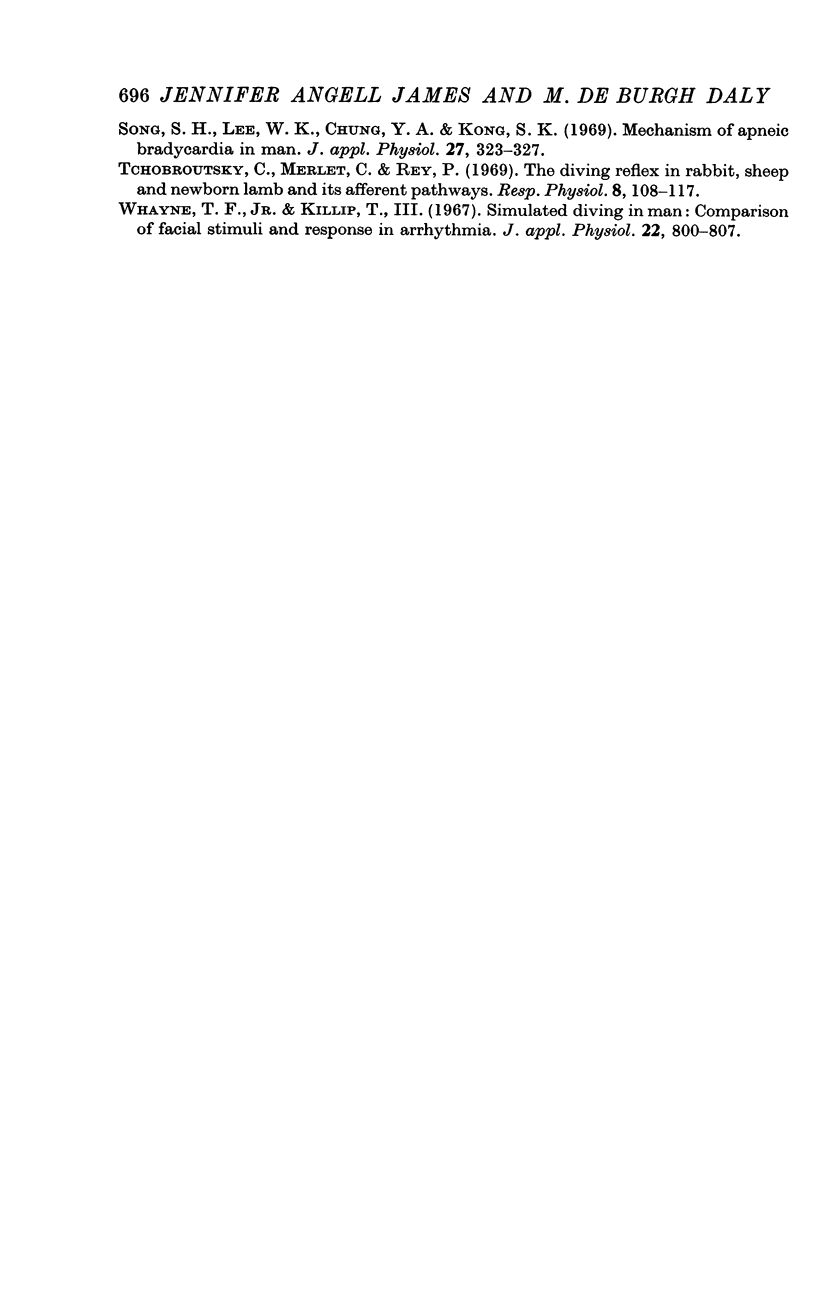
Selected References
These references are in PubMed. This may not be the complete list of references from this article.
- Allison D. J., Powis D. A. Adrenal catecholamine secretion during stimulation of the nasal mucous membrane in the rabbit. J Physiol. 1971 Sep;217(2):327–339. doi: 10.1113/jphysiol.1971.sp009574. [DOI] [PMC free article] [PubMed] [Google Scholar]
- Andersen H. T. Physiological adaptations in diving vertebrates. Physiol Rev. 1966 Apr;46(2):212–243. doi: 10.1152/physrev.1966.46.2.212. [DOI] [PubMed] [Google Scholar]
- Angell James J. E., Daly M. de B. Nasal reflexes. Proc R Soc Med. 1969 Dec 12;62(12):1287–1293. [PMC free article] [PubMed] [Google Scholar]
- Bouckaert J. J., Heymans C. On the reflex regulation of the cerebral blood flow and the cerebral vaso-motor tone. J Physiol. 1935 Jul 24;84(4):367–380. doi: 10.1113/jphysiol.1935.sp003287. [DOI] [PMC free article] [PubMed] [Google Scholar]
- Brodie T. G. On reflex cardiac inhibition. J Physiol. 1900 Dec 31;26(1-2):92–106. doi: 10.1113/jphysiol.1900.sp000824. [DOI] [PMC free article] [PubMed] [Google Scholar]
- Butler P. J., Jones D. R. Onset of and recovery from diving bradycardia in ducks. J Physiol. 1968 May;196(2):255–272. doi: 10.1113/jphysiol.1968.sp008505. [DOI] [PMC free article] [PubMed] [Google Scholar]
- CASSIN S., DAWES G. S., MOTT J. C., ROSS B. B., STRANG L. B. THE VASCULAR RESISTANCE OF THE FOETAL AND NEWLY VENTILATED LUNG OF THE LAMB. J Physiol. 1964 May;171:61–79. doi: 10.1113/jphysiol.1964.sp007361. [DOI] [PMC free article] [PubMed] [Google Scholar]
- CHUNGCHAROEN D., De BURGH DALY M., NEIL E., SCHWEITZER A. The effect of carotid occlusion upon the intrasinusal pressure with special reference to vascular communications between the carotid and vertebral circulations in the dog, cat and rabbit. J Physiol. 1952 May;117(1):56–76. [PMC free article] [PubMed] [Google Scholar]
- Cauna N., Hinderer K. H., Wentges R. T. Sensory receptor organs of the human nasal respiratory mucosa. Am J Anat. 1969 Feb;124(2):187–209. doi: 10.1002/aja.1001240205. [DOI] [PubMed] [Google Scholar]
- Corbett J. L., Kerr J. H., Prys-Roberts C. Cardiovascular responses to aspiration of secretions from the respiratory tract in man. J Physiol. 1969 Mar;201(1):51P–52P. [PubMed] [Google Scholar]
- Corriol J., Rohner J. J. Rôle de la température de l'eau dans la bradycardie d'immersion de la face. Arch Sci Physiol (Paris) 1968;22(2):265–274. [PubMed] [Google Scholar]
- DALY M. D., SCOTT M. J. The effects of acetylcholine on the volume and vascular resistance of the dog's spleen. J Physiol. 1961 Apr;156:246–259. doi: 10.1113/jphysiol.1961.sp006673. [DOI] [PMC free article] [PubMed] [Google Scholar]
- Daly M. D., Robinson B. H. An analysis of the reflex systemic vasodilator response elicited by lung inflation in the dog. J Physiol. 1968 Mar;195(2):387–406. doi: 10.1113/jphysiol.1968.sp008464. [DOI] [PMC free article] [PubMed] [Google Scholar]
- Daly M., Ungar A. Comparison of the reflex responses elicited by stimulation of the separately perfused carotid and aortic body chemoreceptors in the dog. J Physiol. 1966 Jan;182(2):379–403. doi: 10.1113/jphysiol.1966.sp007828. [DOI] [PMC free article] [PubMed] [Google Scholar]
- De Burgh Daly M., Hazzledine J. L., Ungar A. The reflex effects of alterations in lung volume on systemic vascular resistance in the dog. J Physiol. 1967 Feb;188(3):331–351. doi: 10.1113/jphysiol.1967.sp008142. [DOI] [PMC free article] [PubMed] [Google Scholar]
- Dixon W. E. Contributions to the physiology of the lungs: Part I. The bronchial muscles, their innervation, and the action of drugs upon them. J Physiol. 1903 Mar 16;29(2):97–173. doi: 10.1113/jphysiol.1903.sp000947. [DOI] [PMC free article] [PubMed] [Google Scholar]
- GESSNER U., BERGEL D. H. FREQUENCY RESPONSE OF ELECTROMAGNETIC FLOWMETERS. J Appl Physiol. 1964 Nov;19:1209–1211. doi: 10.1152/jappl.1964.19.6.1209. [DOI] [PubMed] [Google Scholar]
- Gaddum J. H., Kwiatkowski H. The action of ephedrine. J Physiol. 1938 Oct 14;94(1):87–100. doi: 10.1113/jphysiol.1938.sp003664. [DOI] [PMC free article] [PubMed] [Google Scholar]
- Kawakami Y., Natelson B. H., DuBois A. R. Cardiovascular effects of face immersion and factors affecting diving reflex in man. J Appl Physiol. 1967 Dec;23(6):964–970. doi: 10.1152/jappl.1967.23.6.964. [DOI] [PubMed] [Google Scholar]
- LINDGREN P. An improved method for drop recording of arterial or venous blood flow. Acta Physiol Scand. 1958 Feb 10;42(1):5–11. doi: 10.1111/j.1748-1716.1958.tb01536.x. [DOI] [PubMed] [Google Scholar]
- Song S. H., Lee W. K., Chung Y. A., Hong S. K. Mechanism of apneic bradycardia in man. J Appl Physiol. 1969 Sep;27(3):323–327. doi: 10.1152/jappl.1969.27.3.323. [DOI] [PubMed] [Google Scholar]
- Tchobroutsky C., Merlet C., Rey P. The diving reflex in rabbit, sheep and newborn lamb and its afferent pathways. Respir Physiol. 1969 Dec;8(1):108–117. doi: 10.1016/0034-5687(69)90048-6. [DOI] [PubMed] [Google Scholar]
- Whayne T. F., Jr, Killip T., 3rd Simulated diving in man: comparison of facial stimuli and response in arrhythmia. J Appl Physiol. 1967 Apr;22(4):800–807. doi: 10.1152/jappl.1967.22.4.800. [DOI] [PubMed] [Google Scholar]


